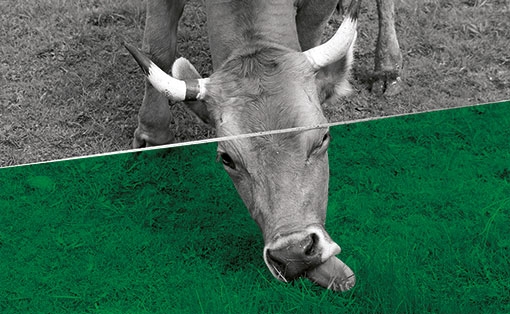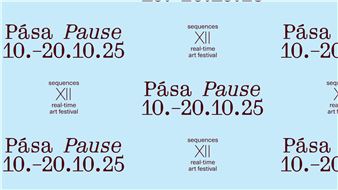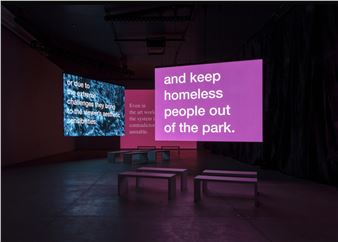The Grass is Always Greener on the Other Side
36 artists from Liechtenstein, Iceland, Luxembourg and Montenegro focus on the reality of small European states and how they are perceived by others.
The world is on the move, driven by the idea that things are better elsewhere. Some people leave their homes in search of education, work or a better life. Others travel out of interest, a thirst for adventure or to do their bit for a better world.
At the exhibition "The Grass is Always Greener on the Other Side", 36 artists aged between 25 and 45 inquire how a small state presents itself, whether it can play a model role, and what effects migration and tourism have. The aim of the show is to draw a critical comparison between the small states and, at the same time, to try to find inspiring unique features.
As of 29 August, the artworks will be joined by the "kuska" exhibition on development cooperation. To improve the conditions of life in "developing countries", people, money and goods move around the globe. But how does development cooperation function? What happens with donations? Have we really reduced global poverty when every eighth person is still starving today?

Recommended for you
36 artists from Liechtenstein, Iceland, Luxembourg and Montenegro focus on the reality of small European states and how they are perceived by others.
The world is on the move, driven by the idea that things are better elsewhere. Some people leave their homes in search of education, work or a better life. Others travel out of interest, a thirst for adventure or to do their bit for a better world.
At the exhibition "The Grass is Always Greener on the Other Side", 36 artists aged between 25 and 45 inquire how a small state presents itself, whether it can play a model role, and what effects migration and tourism have. The aim of the show is to draw a critical comparison between the small states and, at the same time, to try to find inspiring unique features.
As of 29 August, the artworks will be joined by the "kuska" exhibition on development cooperation. To improve the conditions of life in "developing countries", people, money and goods move around the globe. But how does development cooperation function? What happens with donations? Have we really reduced global poverty when every eighth person is still starving today?
Artists on show
- Adrijana Gvozdenović
- Alex Braubach
- Amayi Wittmer
- Anna Fríða Jónsdóttir
- Anna Hilti
- Arnar Ásgeirsson
- Asdis Sif Gunnarsdottir
- Ásmundur Ásmundsson
- Ásta Fanney Sigurðardóttir
- Beate Frommelt
- Björk Viggósdóttir
- Bryndís Björnsdóttir
- Danny Holcroft
- Eva Ísleifs
- Florian Bücking
- Gabriela Friðriksdóttir
- Gunnhildur Hauksdottir
- Jelena Tomašević
- Karin Ospelt
- Karolina Markiewicz
- Katrín Inga Jónsdóttir Hjördísardóttir
- Manfred Naescher
- Meikel Mathias
- Milena Jovićević
- Natalija Vujoševic
- Nenad Šoškić
- Pascal Piron
- Ragnar Jónasson
- Rebekka Erin Moran
- Serge Ecker
- Sigurður Atli Sigurðsson
- Simon Kindle
- Susana Beiro
- Una B. Sigurðardóttir
- Vincent Wood

 ARTISTS
ARTISTS













